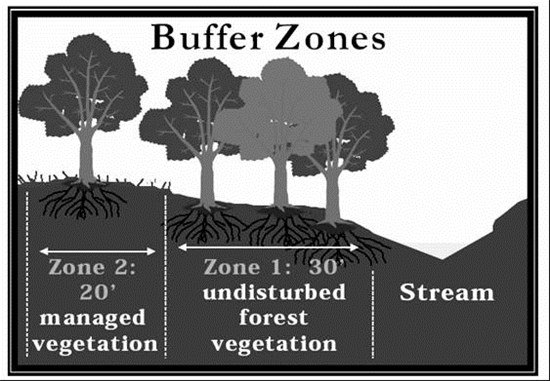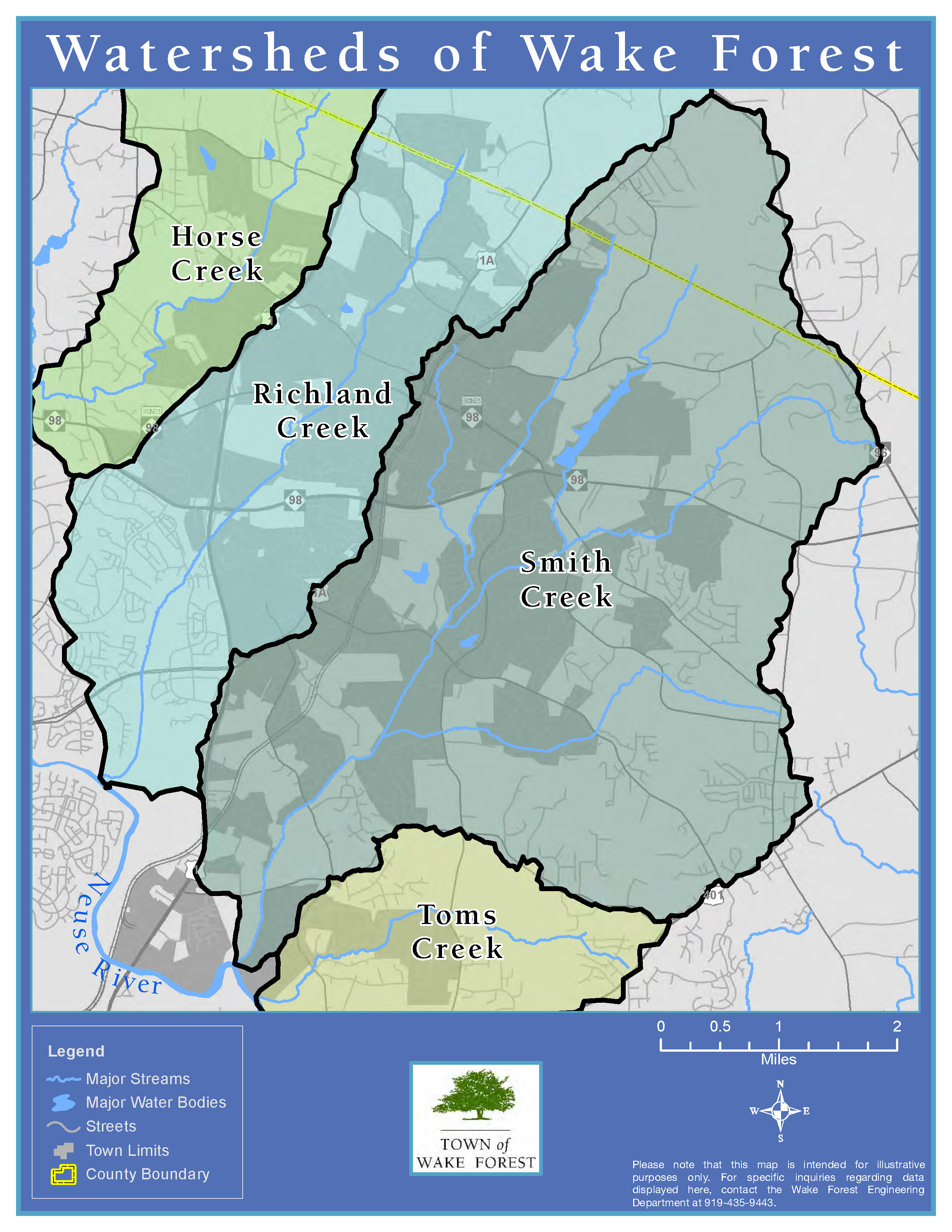Wake Forest has four subwatersheds flowing directly into the Neuse River; Horse Creek, Richland Creek, Smith Creek, and Toms Creek with many first order headwater streams and small unnamed tributaries. We also have several named tributaries to Smith Creek including Sanford Creek, Austin Creek, Hatters Branch, and Spring Branch. Wake Forest is located in the larger Neuse River Basin which outlets into Pamlico Sound. Things we do here can have an affect all the way to the ocean!
Increased development without proper stormwater treatment BMP's can lead to poor water quality with higher than normal levels of nitrogen and phosphorus. Removal of stream buffers can increase stream temperature levels and lower dissolved oxygen which can cause fish kills. Filling or disruption of floodplains can cause severe damage to stream banks, houses, and roadways.
Both Smith Creek and Tom's Creek are impaired watersheds for lack of aquatic bugs or macroinvertabrates. These streams are being studied and monitored to help improve water quality.
If you would like to help our watersheds, please consider the Adopt a Stream Program. 
Neuse River Basin Riparian Buffer
Buffer areas help filter pollution, increase shading, and decrease stream temperatures. Wooded buffers also help keep the stream banks stable which in turn limits the amount of flood damage to homes and structures during large storm events.
Many stream buffers are removed or mowed right to the waters edge to increase yard size or limit snakes or wildlife to make it more appealing. All streams in Wake Forest are required to have a minimum 100 foot buffer starting from the top of the stream bank 50 feet on each side of the water. It is a violation of the Neuse River Riparian Buffer Rule to remove the buffer. Costly fines and restoration may result from filling, grading, and removal.
We can create stunning buffer conservation areas with beautiful plants that are both functional and visually appealing while still maintaining a nice looking yard. By discontinuing mowing in both zone 1 and zone 2 and selecting a variety of plants, we can also make the area attractive for birds, butterflies, and humming birds while limiting snakes and other pests.
Town staff in conjunction with Wake County Soil and Water Conservation District and NC Cooperative Extension are available to help repair stream banks and buffers to create stable and healthy streams.
If you suspect a stream buffer violation, please contact NCDEQ Division of Water Resources.
Floodplains
Floodplains act as energy dissipaters for streams when they become overwhelmed by large storms.
During excessive rainfall, a stream can become overwhelmed by excess runoff. When water rises over the banks of the stream, it spreads out into the floodplain instead of speeding down the stream channel and taking out a stream bank in a bend, a house, a roadway or even a bridge. Many streams are no longer connected to their floodplains and have both bank erosion and down cutting problems as a result.
The Town of Wake Forest protects the 500-year storm floodplain. Floodplains are currently regulated by Nick Nolte, 919-435-9449.


